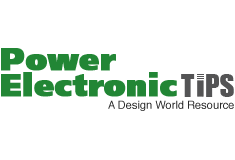Nuvation Engineering’s latest 3rd generation version of its Battery Management System (BMS) is designed to monitor, balance, and protect large scale battery stacks in many applications. including large-scale lithium battery stacks. Other battery chemistries including nickel are also supported. This system addresses the needs associated with today’s complex battery systems, including safety, accuracy, noise immunity, compliance with industry standards, and competitive cost. Battery stacks are found in electric vehicles, internal combustion engine replacements, grid storage, uninterruptible power supply systems, solar and wind power conversion systems, residential time-of-use billing load redistribution systems, and many military/defense applications.
Providing a shortcut through many technical challenges to minimize the R&D required for new battery system technology, Nuvation’s BMS has already been used to significantly improve battery life, safety, scalability and fuel gauging of electric vehicles, all while decreasing charge time; thus improving ROI and time-to-market.
“The technology to manage next-generation battery systems for peak performance is complex, requiring state-of-the-art design and testing to guarantee results. The Battery Management System includes highly functional design hooks to many popular interface technologies,” said Michael Hermann, VP of Engineering at Nuvation. “Currently, our BMS platform can be quickly customized for solutions that address hybrid-electric and all-electric automobiles and secondary vehicles, grid-attached power solutions, remote communications platforms, unmanned aerial vehicles, and of course, battery manufacturers themselves.”
Nuvation’s BMS provides original equipment manufacturers a platform that can address their entire large-scale battery-powered product roadmap with a single platform. The platform, truly designed with engineering needs in mind, combines impressive design option flexibility with a broad range of possible target applications. Decided early in the architecture-planning phase, a highly flexible and extensible platform was created, Hermann explained, rather than attempting to predict all of the potential variations that OEM customers could envision.
Nuvation Engineering
www.nuvation.com



Leave a Reply